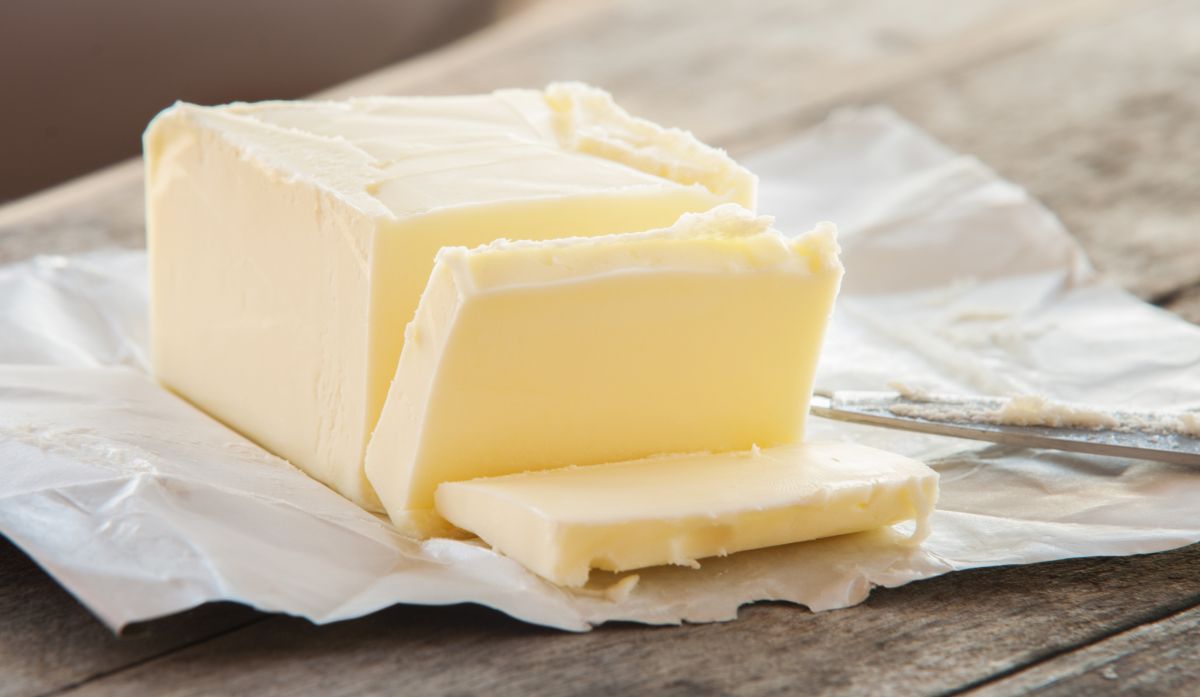When analyzing the difference between butter and margarine, there are a few factors to consider when deciding which one to buy or consume.

Key Differences Between Butter and Margarine
Fats Involved
- Butter has high levels of cholesterol as well as saturated fats and trans fats.
- Margarine has polyunsaturated, monounsaturated fats, and trans fats.
Process of Making
- Butter can be made within your own kitchen.
- Margarine requires a complicated chemical process.
What is Butter?
Butter is a popular dairy product used in a variety of dishes. You might be called to use it in many baking recipes since it adds flavor and texture to a variety of baked goods.
To create butter, you start by taking cream and then churning it. This process causes the solids, or butterfat, to separate and causes the liquid, or buttermilk, to separate. Butter is something you can make at home.
Butter Varieties
- Salted
- Unsalted
- Sweet cream, which is made by using pasteurized cream
- Whipped – a butter spread that is lower in fat and calories compared to regular butter
Health Benefits of Butter
- Depending on the type of butter, it can contain several nutrients that are not found in many other foods. If you have butter from grass-fed cows, the butter may provide a vitamin called K2, which has been associated with improving bone health.
- Butter from grass-fed cows can contain more nutrients like conjugated linoleic acid, and studies suggest that conjugated linoleic acid can help lower your percentage of body fat. It also has anti-cancer properties.
- Grass-fed butter can contain butyrate, which is a fatty acid produced by the bacteria in the intestine. Butyrate can help with fighting inflammation, as well as improve digestive health and possibly prevent weight gain.
- Grass-fed butter is also known to have less omega-6 and more omega-3.
Risks of Eating Butter
High In Cholesterol
Butter is high in cholesterol, and at one point this was thought to be a risk factor for heart disease. It’s now clear that consuming a moderate amount of cholesterol is okay for most people as it won’t raise blood levels, but it is important to monitor how much cholesterol you are consuming.
You also want to be cautious of your butter consumption if you have a genetic condition, such as hypercholesterolemia.
High In Saturated Fat
Saturated fat makes up 50% of butter. While high amounts of saturated fat have been linked to a greater risk of heart disease, this is controversial since the evidence is not consistent.
What is Margarine?
Margarine is made to have a similar taste to butter but isn’t made using dairy products. This alternative is made by combining oil, water, salt, and other ingredients, such as emulsifiers. It’s not possible to make margarine from home, since it requires a complicated chemical process to make.
Health Benefits of Margarine
- The majority of margarine is high in polyunsaturated fats and this depends on the kind of vegetable oil it contains. This kind of fat is generally considered to be healthy.
- There are different studies that show eating polyunsaturated fat rather than saturated fat has the potential to reduce the risk of health problems.
- Some types of margarine can also contain phytosterols or stanols, and these can be found in vegetable oils. These don’t seem to have an impact on the risk of heart disease as it hasn’t been detected in most studies.
Risks of Eating Margarine
Can Be High in Trans Fats
Since making margarine relies on a complicated chemical process that involves hydrogenation, this process can transform unsaturated fats into saturated fats but also forms trans fat as a side product.
The consumption of trans fats in high amounts has been linked to an increase in chronic disease. Health authorities advise that people should be mindful of their consumption.
May Be High in Omega-6 Fat
There are many kinds of polyunsaturated fats, and one of the most common is omega-6 fats. In observational studies, scientists have linked omega-6 to increasing an individual’s risk of obesity and chronic diseases, such as heart disease.
Since margarine contains omega-6 fats, some scientists believe that consuming this fat excessively can promote inflammation. Despite this, controlled studies do not support the idea that excessive consumption of margarine promotes inflammation.
Alternatives To Butter and Margarine
- Applesauce can serve as a substitute for a large number of wet ingredients, such as butter or oil while baking.
- Greek yogurt can be used as a substitute for butter and margarine. Greek yogurt varies in fats and other nutrients.
- Various plant oils can be used as an alternative to butter and margarine. These plant oils include avocado, canola, and vegetable oil.
Which is the Healthier Choice?
Ultimately, it’s not clear that butter or margarine is the healthier choice. It’s also best to consume either butter or margarine in moderation.
Butter is high in saturated fats and the health effects of these fats are controversial. If you choose to consume butter over margarine, choose a type of butter where grass-fed cow’s milk was used.
Since margarine contains trans facts, scientists agree that there is an increased risk of chronic disease. If you choose to consume margarine over butter, you want to select a trans-fat-free option. You should look for margarine that is made with healthy oils, such as olive oil.


Leave a Reply